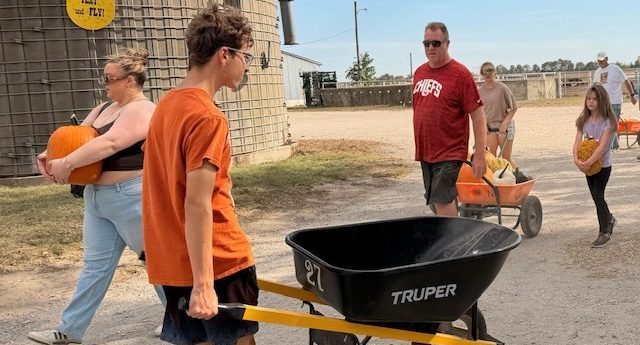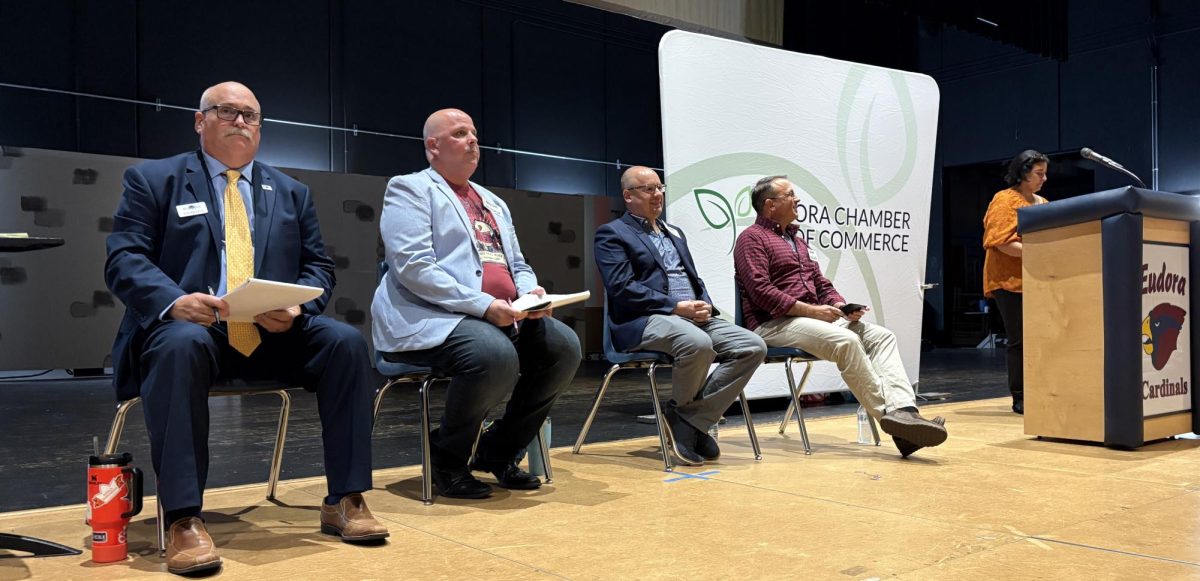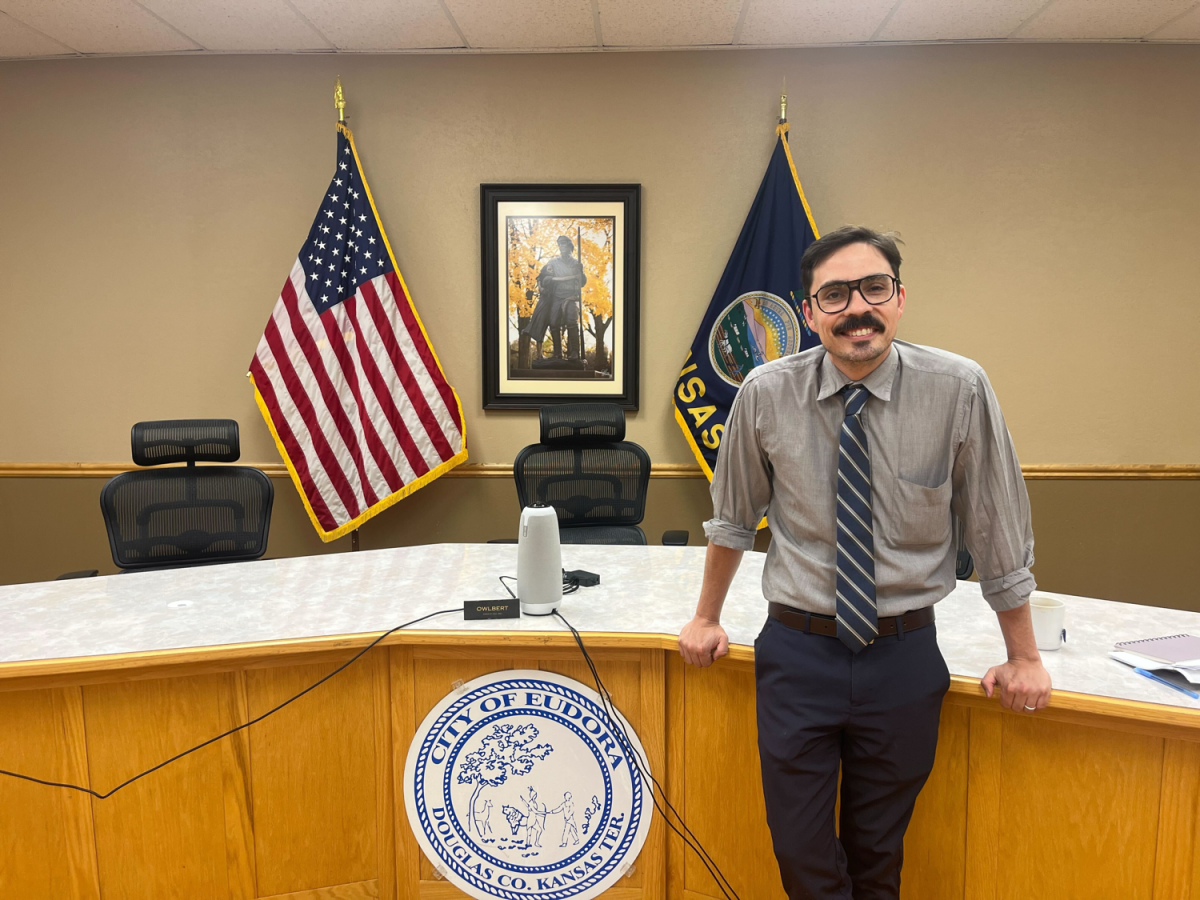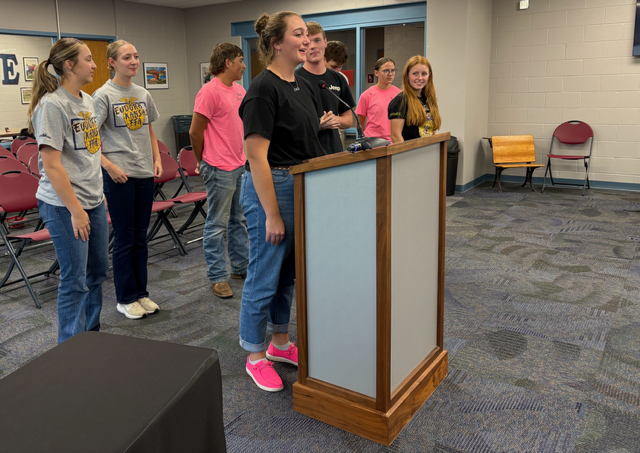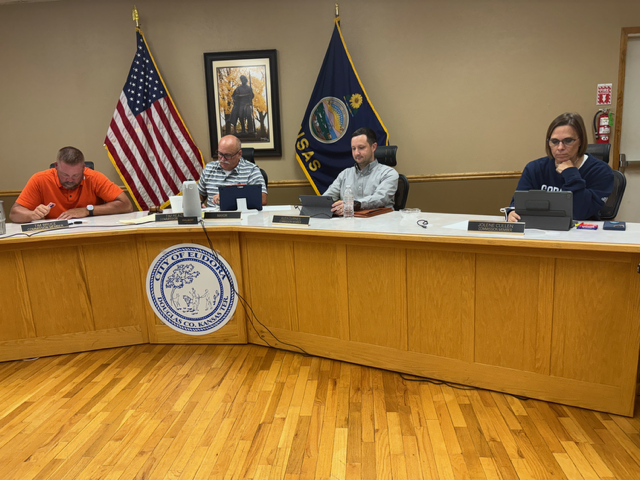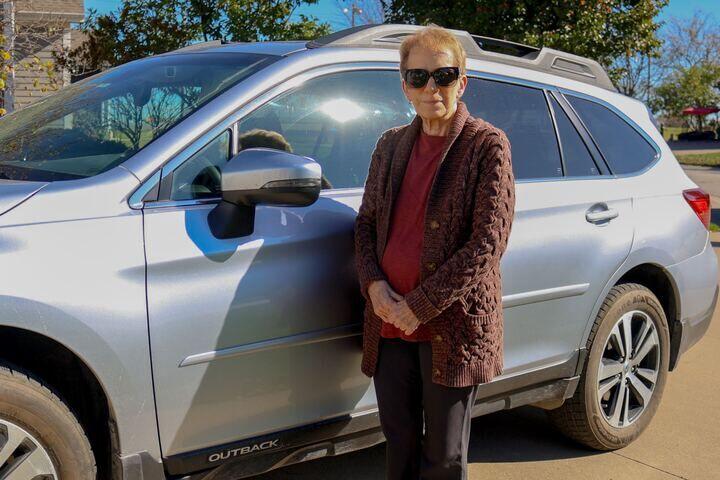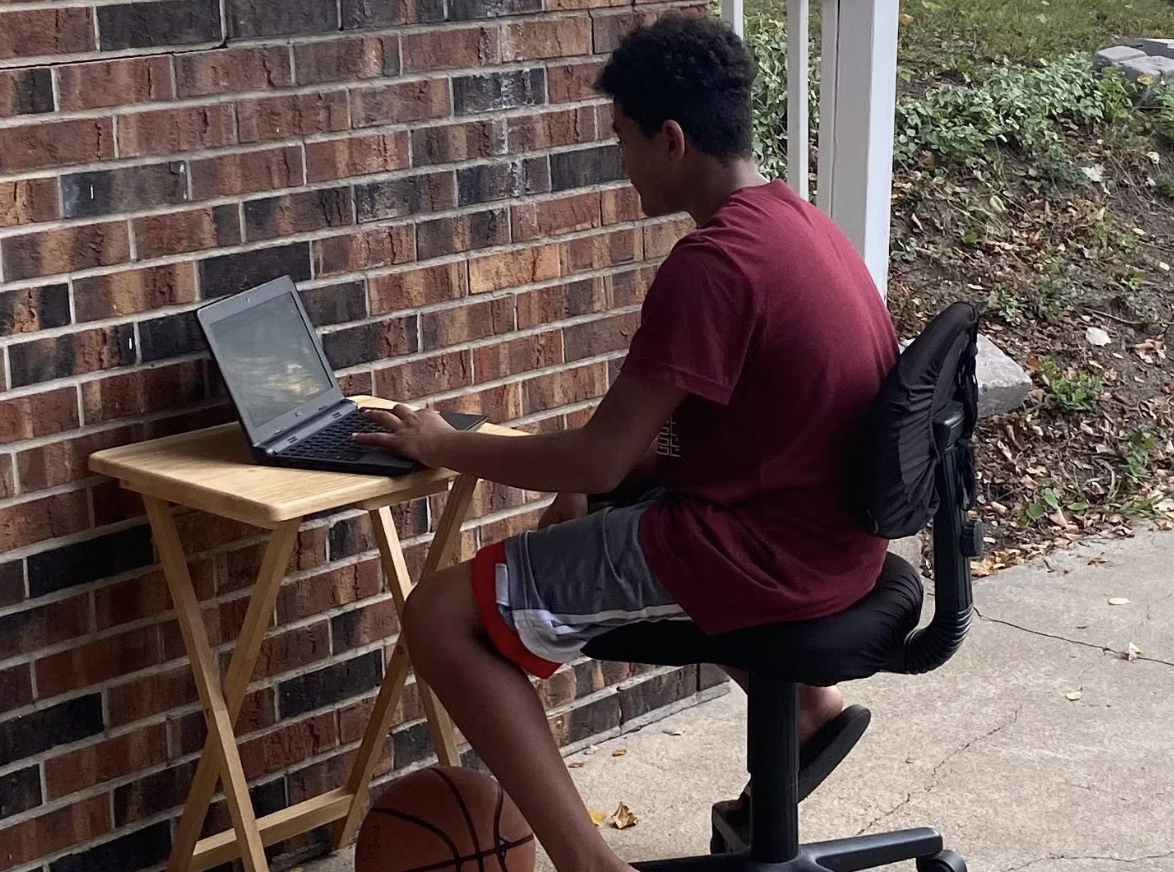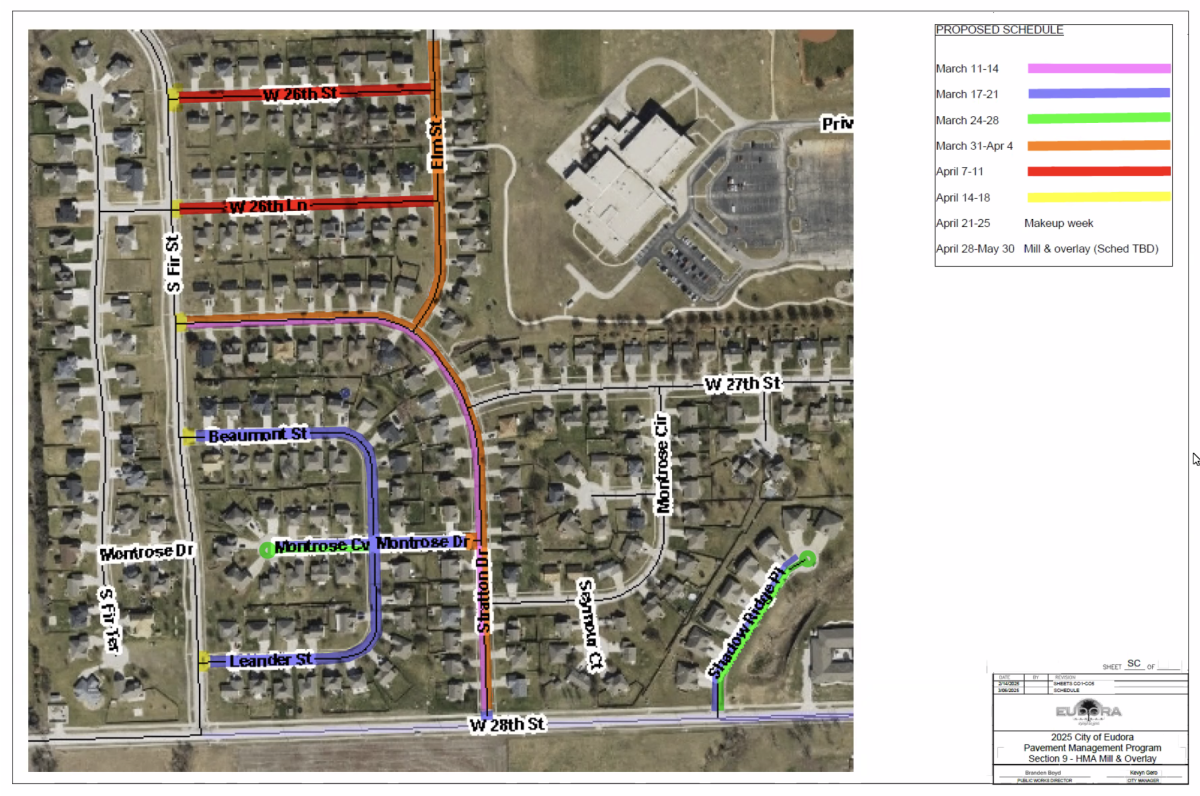Kathy Davis started mentally preparing nearly 30 years ago for the day she would have to give up her car keys after being diagnosed with glaucoma.
“I knew this was going to come someday,” Davis said.
A decade ago, that transition began when it became difficult for Davis, now 77, to see in the dark. The driving limitations continued to evolve after that.
“I didn’t drive on the highway because the speeds are too fast,” she said. “Then, I gave up driving in Kansas City, because the traffic in Kansas City is much heavier and people drive a lot faster.”
Now, Davis only drives in Eudora because there are no four-lane roads and traffic is light. She occasionally drives to Lawrence to take her dog to the groomer.
While Davis was proactive about acknowledging her driving limits, conversations about when to give up the keys can be difficult between seniors and their children. Yet with 73 million members of the baby boom generation set to reach age 65 or older by 2030, families are increasingly needing to discuss it.
Professionals in the area of aging shared their thoughts on how to manage this transition.
Time to talk
The number of licensed drivers 65 and older has grown from 27.6 million in 2001 to 49.6 million in 2021, according to the National Highway traffic Safety Administration. Although age alone doesn’t predict driving safety, there are a variety of factors to consider.
Michele Dillon, a caregiver support specialist at the Jayhawk Area Agency on Agency, said it’s important for families to start discussing the topic of quitting driving early.
“Have the conversation of, ‘Hey, if something should happen and you can’t drive, what does that look like for you?’” she said.
By having these conversations early, it allows the older adult to be part of the decision-making process. If an older adult doesn’t want to have those conversations, Dillon said families should keep trying to make that conversation happen.
When families are trying to evaluate if an older adult is an unsafe driver, Dillon suggests getting in the car and letting them drive you around.
She said it’s important to pay attention to their reaction time, their driving speed and if they are missing turns or getting lost.
“If you drive with them a couple of times, you can kind of get a good, clear indication,” Dillon said.
Dillon also advised paying attention to any damage to their car, especially if the older adult can’t remember how it happened.
“If they’re completely oblivious to the fact that there’s a problem, then you just need to have those ‘come to Jesus’ conversations,” she said.
If it gets to the point where an older adult needs to stop driving, Dillon said it would be better for them to hear that from a doctor or other professional.
“A lot of times, especially with a certain generation, it’s hard for folks to take direction from their children,” she said. “So, sometimes, having a professional tell you that is the best.”
Megan Poindexter, executive director at the Senior Resource Center, said bringing up the conversation of stopping driving to a loved one can be difficult because it is a sensitive subject.
“It’s really personal,” she said. “It can surprise us how emotional it can feel for the people who are going through it.”
Poindexter said it’s important to be patient and understanding when having these conversations with older adults.
“Think about how you would want to be treated, how you would want this conversation to happen to you, and really lean into that,” she said.
“That is a huge red flag”: Signs you should stop driving
Kristin Nichols, a social worker at the KU Health Center, said if older adults are finding dents on their vehicle or are having difficulty navigating familiar places, then they should consider speaking with their doctor about being assessed.
“That is a huge red flag,” she said. “Those would all be indicators that something is changing and that it will be valuable to take a closer look.”
Nichols said how and when an older adult decides to stop driving is fully based on their health.
“I really think it’s much more about each individual and where they are from a medical perspective,” Nichols said. “It’s much more about their functional ability.”
Prior to working for KU Health Center, Nichols worked as an occupational therapist specializing in driving rehabilitation where she assessed individual’s driving habits and evaluated if they were safe drivers.
Nichols said there is a long list of things to look at when assessing an older adult’s driving, like cognitive function and physical abilities.
“A clinical look at their vision, their perception, how their brain interprets what it sees. How they are able to process information cognitively: memory, attention, judgment. Physically looking at how they move their body and break reaction time. So, just a variety of things that are important to driving,” Nichols said.
If an individual doesn’t listen to the advice of a professional, there are options for families dealing with a loved one not wanting to give up their keys. Dillon said one option is to let the family member keep driving.
“If you’ve expressed your opinion and your concern, and they’re not caring, you can just let it go. They’ll have to deal with the consequences because they’re still adults,” Dillon said.
Tom Gibson, driver safety instructor at AARP Kansas, said another option is stepping in by reporting them as an unsafe driver to the Kansas Department of Revenue’s Division of Vehicles.
Overall, Gibson said older drivers are more likely to be safer drivers compared to other age groups.
“Up to the age of 75, older folks are usually safer drivers. They’re not looking at their phone while they’re driving. They’re not talking to their buddies and having a good time in the car while they’re driving,” Gibson said.
However, drivers over 70 years old are more likely to be the ones to die in fatal traffic crashes, according to the CDC. The higher crash death rates are primarily due to an older adult’s increased risk of injury in a crash.
“Part of that problem is not that they’re not a good driver, part of it is health. They’re not as strong as they once were,” he said.
Gibson said there are a number of things to evaluate when deciding to give up driving.
“Are they getting speeding tickets? Are they getting in accidents? Are they not conscious of where they are? Do they call someone and say, ‘Hey, I’m lost. How do I get home?’” Gibson said.
Even though not driving can be an inconvenience, there is a big reason why Davis continues to limit herself to driving in Eudora.
“I don’t want to cause harm to anyone,” she said.
Her advice to those thinking about quitting driving is to not wait until something bad happens.
“Don’t push it that far to have an accident and harm yourself or someone else,” Davis said.
Why is it difficult to quit? The psychological side
Overall, Dillon said it is necessary for families to put themselves in their loved one’s shoes.
“If you think about when you drive, how much control you are releasing, you might understand better where people are coming from and why they make such a fuss,” Dillon said.
Dillon said driving gives individuals a sense of autonomy and control, making it more difficult to give it up.
“When you have to rely on other people to get somewhere, your self worth declines a little bit,” Dillon said.
Dillon said older adults have to give up a lot as they age, especially if they have health issues.
“If you’ve already got health issues, you’ve already got things that you can’t control,” she said. “You’re going to try and control those things that you can, right?”
She said these conversations can be overwhelming for older adults.
“If there is resistance, it’s a coping mechanism. Sometimes they might be overwhelmed or they don’t know what the solutions are,” she said.
Giving the older adult those solutions before telling them to stop driving can be helpful, Dillon said. One helpful solution is offering to give them a ride.
“If it’s for church, you know, say, “Hey, I’m already going to church. Why don’t I come pick you up?” she said. “People offering makes it a little bit less overwhelming.”
Dillon said people don’t want to be a bother, which is why offering to drive an older adult helps them not feel like a burden.
“That makes it a little bit better because they’re not asking for a ride, they’re being offered,” she said.
Poindexter said lots of people see driving as their source of freedom.
“At any point in our lives when we lose either a big chunk or a small chunk of our freedom and independence, it just feels awful,” Poindexter said.
However, Davis said she never felt she lost her independence once she limited her driving.
“It isn’t like I feel my freedom is gone because I can’t drive anymore,” Davis said.
Davis credits this to her friends and family giving her rides to go to the doctor’s office or the grocery store, as well as the Senior Wheels program.
“I can get rides into Lawrence whenever I want to go to something,” she said.
Resources to help
Eudora Senior Wheels, a partnership between the Senior Resource Center and the Senior Foundation of Eudora, offers transportation within Douglas County.
In 2023, the program had 237 days in service traveling over 9,000 miles with Eudora passengers. There were 1,204 rides with Eudora passengers: 738 medical-related and 468 ADA-accessible rides.
Poindexter said the program is popular because it is a huge need within the community.
“We live in a world where you can do an awful lot from home, but you can’t do everything from home, and if you’re not able to drive, that need just doesn’t change,” Poindexter said. “I think that a great deal of the popularity is just based on the demands.”
Starting next year, the city of Eudora will help fund the program by pledging $4,000 annually, up from $2,500.
The program operates from 7 a.m. to 3:30 p.m. during the week. To schedule a ride with Senior Wheels, call 785-727-7876 at least 24 hours before needing a ride.
Poindexter said Eudora residents using the program are suggested to donate $4 for rides within the city and $6 for rides outside of the city.
“We really strongly encourage folks to make that suggested donation amount, because it costs between $35 and $60 each way,” Poindexter said. “The little bit that they contribute – although it’s not a ton of the percentage of the actual cost – every little bit helps.”
Davis said using the program or asking people for rides is not as complicated as it may seem.
“You do have to plan, but it’s not a real burden,” Davis said.
Whether someone is trying to drive safer or in the process of quitting driving, there are plenty of other resources to help older adults.
Gibson encourages people to become an AARP member.
“We have so many programs out there available to help our older folks, and people don’t use them like they should,” Gibson said. “Membership is cheap. The only program that we charge for is the driver safety class and that’s because we provide a ton of information. Everything else we do is free.”
AARP’s Driver Safety course teaches older adults how to drive safely as they age. The class costs $20 for members and $25 for non-members.
Gibson also teaches the “We Need to Talk” program through AARP, teaching families how to have conversations with their loved ones about quitting driving.
“We’ve got another program called CarFit where we actually take them and walk them around the car,” Gibson said.
With CarFit, older adults can get their seats, mirrors and seat belts adjusted to ensure their car is fitting them safely.
The program works to prevent fatal injury in the case of a crash, traffic safety specialist Cynthia Callaway said.
“We are simply there to help you fit into your vehicle better, so that you can be safer and the other people with whom you’re sharing the road are safer too,” Callaway said.
Callaway said the program is there to help individuals drive safer for longer.
“We’re not there to take your keys away,” she said.
Davis wants people to know life doesn’t end when you stop driving.
“I think people feel like they just have to stay home all the time, and that’s just so not true,” she said. “ I still go lots of places, I still do lots of things.”
Reach reporter Ryn Drummond at [email protected].

